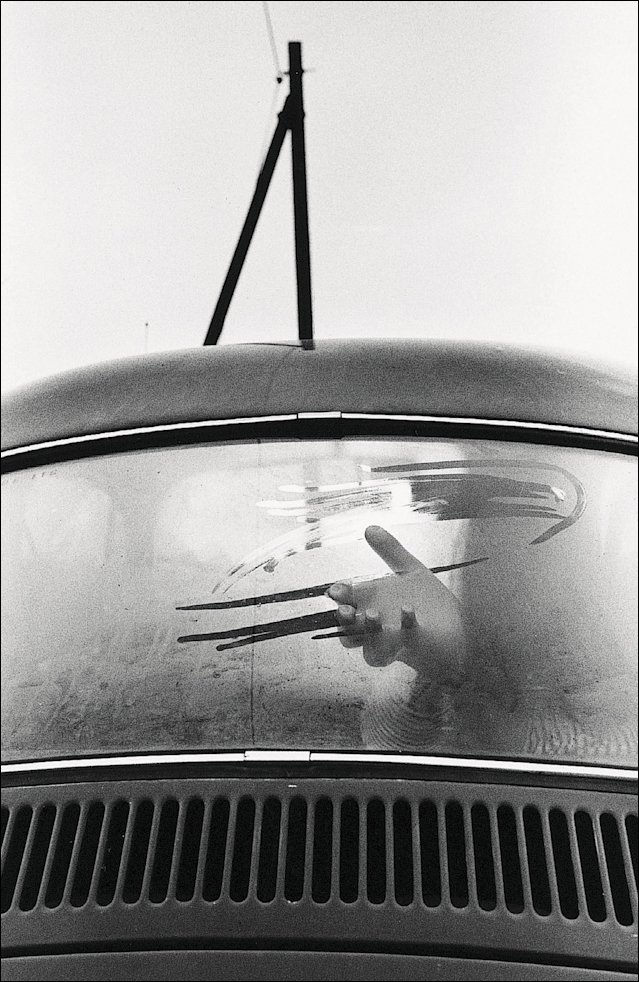Traces
A surface must already exist in order to leave a trace. The paradox being that sometimes you are not leaving anything, but taking something away.
Paul Hill, Hand In Car Window, 1976Memories are removed from the time they were made. The bed is left unmade by the person who leaves it. But it’s not the absence in either case which is important, it’s the change in composition, the mark which was left behind. A trace is perhaps a texture. One which is holey, with gaps and bits missing. Like the unmade bed, surfaces are in a constant state of flux. Silver halide crystals on the surface of film are exposed to light, which react with the composition set before them. The film is then developed and fixed, leaving a negative, an inverted trace of the scene. The grains of silver cluster together then erode away. This creates the texture which is so typical of film photography. A texture that you can almost feel, as if your eyes are wiping the surface of the photo. This back and forth motion is typical of how a trace is formed.
Tim Ingold defines a trace as any enduring mark left in or on a solid surface by a continuous movement. They encourage contact and remind us of previous connections. Traces call for restoration, inviting new surfaces to meet and repairs to take place.They can be memorials, initials carved into bark and names into stone. Or they can be as simple as the glistening path of a snail or footprints in the sand. It is built into our nature to make traces. Paper trails which document who we are, what we’ve done and where we’ve been.
Like a magpie I collect shiny pieces of paper which look just like what I saw last week, or what someone else saw forty years ago. Glossy records of spaces which are no longer here and times which have long gone by. As surfaces they are ephemeral, able to be torn or crumpled, stuck back together then scribbled over. Out of the five senses, sight is associated most with photography. This is not a misplaced presumption, there is a necessary emphasis on the optical when considering a photograph. Yet traces are inherently tactile. And if a photograph operates as a surface, where light leaves traces, there must be something haptic going on. Haptic being the sense of touch, in particular the perception of objects in relation to this sense. This became apparent to me when I saw Hand in Car Window by Paul Hill, in the Centre for British Photography. As the title divulges there is a hand, fingertips pressed up against the glass, which you can see through the car window. There are distinct marks above, and coming from, the hand which reveal where it has glided across the steamy condensation. I know how this feels just from looking at it.
The photograph is as much about touch as it is about vision. It's from a series called Prenotations, amassed between 1974 and 1978, a seminal body of work for Hill. To quote Hill, this series consists of incongruous juxtapositions, visual metaphors and symbolic references that transcend the information that was in front of the camera at the time of exposure. The transcension referred to may well be what can be felt from looking, as opposed to what can be seen. I’m not referring to feeling as an emotional sensation, I by no means exclude this, but more so as the impulse to play, to draw, to reach out and feel the damp cold glass give way to your movements. A muscle memory attached to sight. A sense of embodiment and not just a body. A trace of life.
When I trace, I follow the shape of something with my hand. It is a careful gesture, and one often accompanied by a level of affection. Taking a photograph is an act of care, one of looking at and looking after. This is not a superficial document. Whilst it may be surface level, the texture is divine.
